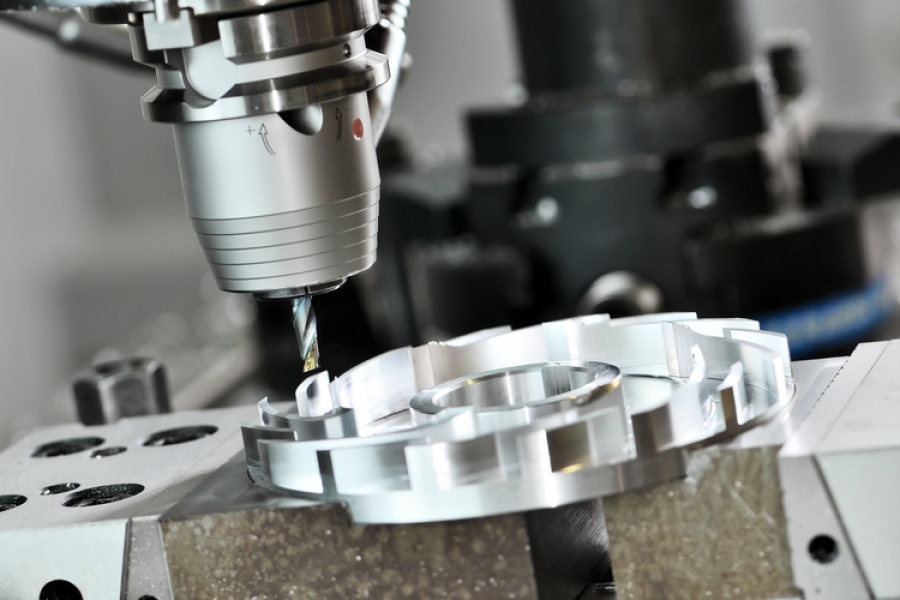
Machining refers to the process of controlled metal removal, which takes a piece of material, referred to as a blank, and transforms it into a finished product. Machining encompasses many different manufacturing processes, including milling, turning, drilling, and tapping. Computer Numerical Control (CNC) machining, in particular, involves the use of computer programming and electromechanical devices that maneuver and precisely position machining tools.
Multi-axis CNC machines can create incredibly complex surfaces and intricate geometries, and CNC, in general, allows for exceptionally high tolerances and high precision while interfacing very well with computer-aided design (CAD) techniques. In many instances, CNC machining is the only viable manufacturing method for making certain types of parts efficiently and economically.
Versatile and reliable, CNC machining methods are used for a huge range of industries and applications.
CNC Machining for Aerospace Applications
CNC machining is widely used in the aerospace industry, which often requires high-tolerance, complex geometries and the use of materials that do not readily lend themselves to other manufacturing methods. In this sector, CNC-machined aerospace parts are often mission-critical and therefore must be made to the highest levels of precision and accuracy.
Tolerances as tight as 0.00004 inches are not uncommon, and there are usually strict requirements for flatness, roundness, and cylindricity that can only be accomplished through computer-controlled machining. And sometimes, part design geometry is so complex that it can only be achieved using a five-axis CNC machining system.
Common examples of CNC-machined aerospace parts include:
–Landing gear components
–Titanium shrouds
–Bushings
–Airfoils
–Manifolds
–Stator assemblies
–Magnesium gearbox housings
–Electrical connectors
Many different materials can be used in aerospace CNC machining; aluminum, stainless steel, brass, nickel, bronze, ceramics, plastics, magnesium, titanium, and high-performance alloys such as Inconel® and Kovar® are popular options.
CNC Machining for Communications Applications
High-tolerance CNC machining is also often utilized in the telecommunications sector. As with aerospace components, telecommunications parts are often involved in mission-critical applications, in which failure is simply not an option. Achieving this level of reliability often necessitates the use of parts that meet incredibly tight tolerances.
Geometries can be extremely complicated, and parts may require surface contouring in order to achieve tight tolerances. A combination of milling and turning may be necessary to produce the final product. Commonly used materials in this sector include aluminum, stainless steel, and brass.
Below are a few examples of communications parts that often require CNC machining:
–Access panel frames
–Heat sinks
–Corrugated horns
–Microwave tower components
–Amplifier housings
–RFI shielding equipment
The Versatility of CNC Machining
For specialty parts in critical industries requiring high levels of precision and accuracy, CNC machining is often an ideal solution. Aside from the ones discussed above, common CNC-machined parts span a range of fields and markets and can include cardiac implants, earrings, custom fuel injectors for cars, biologically implantable devices, gears, golf putters, and custom robotics components.
An excellent option for any type of part requiring extremely high tolerances or involving very complex shapes and geometries — such as those found in aerospace and communications fields — CNC machining is often used in the transportation, sports, medicine, and robotics sectors, among many other specialty applications.
Source: THOMAS

